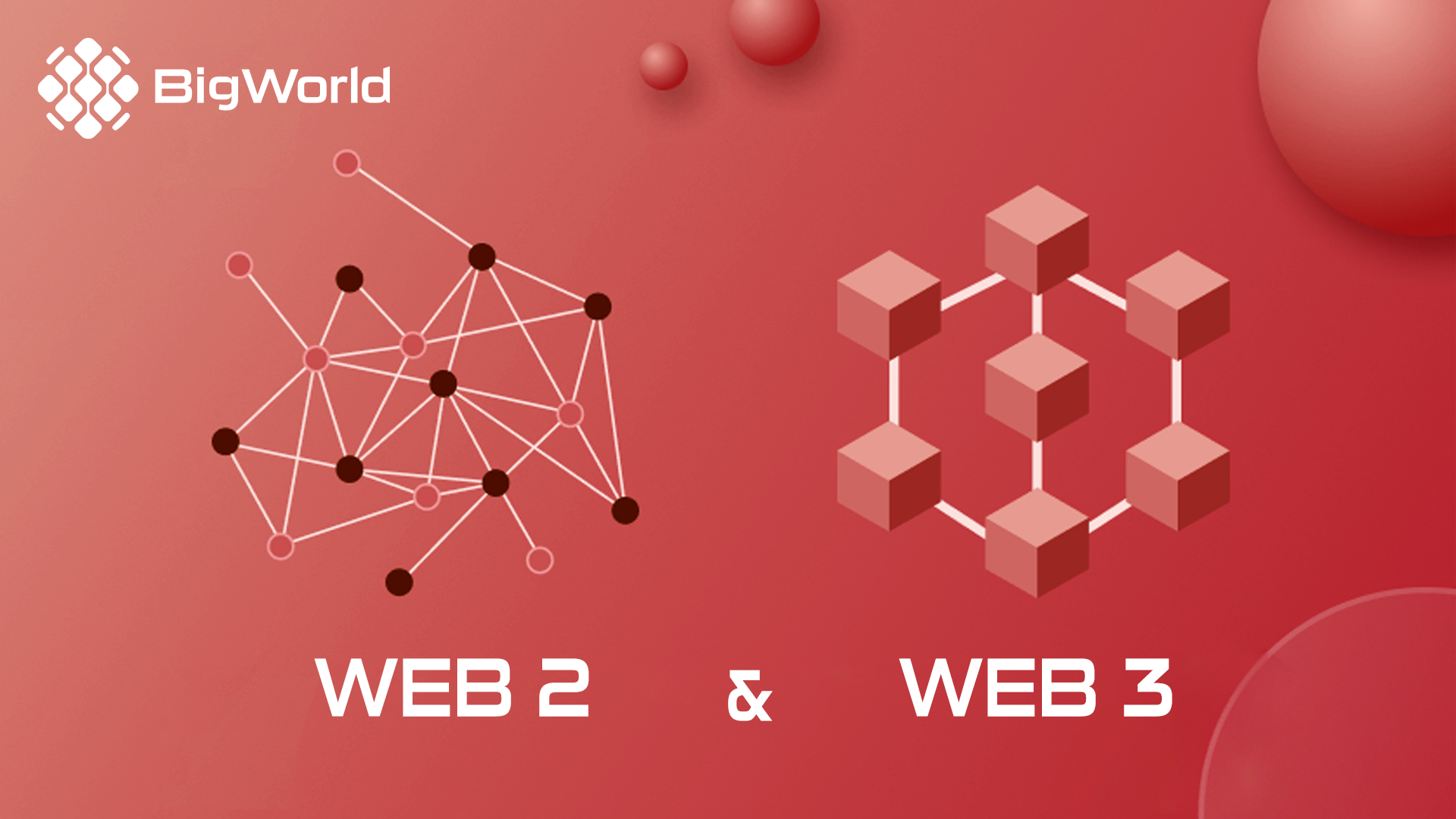What Makes Web3 Different from Web2? Understand to Stay Ahead of the Trend

In the ever-evolving digital world, Web3 is making waves by addressing the limitations of Web2. This article explores the key differences between the two, emphasizing Web3’s strengths like decentralization, enhanced data security, and future potential. Understanding these contrasts is essential for staying ahead in the digital transformation era.
This article by BigWorld will guide you through the fundamental shifts from Web2 to Web3, highlighting why embracing this new era of the internet is crucial for individuals and businesses alike. Dive in to uncover the opportunities and challenges that lie ahead in this groundbreaking digital evolution.
1.What Is Web2?

The Web We Know
Web2 refers to the internet as we commonly experience it today. It is characterized by:
- Centralized platforms like Facebook, Google, and Twitter.
- User-generated content.
- Two-way interaction between users and websites or applications.
However, while Web2 has brought incredible convenience and connectivity, it’s far from perfect. Centralization is its backbone, meaning most of the power lies in the hands of a few big tech companies. These entities control vast amounts of user data, often raising concerns about privacy and transparency. For example, have you ever wondered who owns the personal information you share online? In most cases, it’s not you—it’s the platforms you use.
This centralization also makes Web2 vulnerable to security issues. Data breaches and misuse of information have become alarmingly common, leaving users exposed to risks they often can’t control. While Web2 has revolutionized the way we live and work, its flaws have created a demand for something better—a demand Web3 aims to fulfill.
2. What Is Web3?

The Next Evolution of the Web
Web3, often called the decentralized web, is built on blockchain technology. It introduces:
- Decentralization: Data is distributed across a network rather than stored in a central server.
- Trustless Systems: Users interact directly, relying on smart contracts instead of intermediaries.
- Tokenization: Incentives are embedded into the system, benefiting users.
Picture this: instead of logging into a social media platform and handing over your data, you control it. You decide who can access your information, and no single entity has the power to take it from you. Web3 brings this vision to life by creating systems where trust isn’t placed in institutions but in technology—specifically, smart contracts and blockchain networks.
Another transformative aspect of Web3 is tokenization. Imagine being rewarded for your online activities, whether it’s creating content, sharing insights, or simply engaging with a platform. Tokens provide value to users, incentivizing participation in a way Web2 never could.
With enhanced security, transparency, and user empowerment at its core, Web3 represents a dramatic shift from the internet we know today.
3. Key Differences Between Web2 and Web3

The differences between Web2 and Web3 are striking. Web2 thrives on centralization, with power concentrated in the hands of corporations. In contrast, Web3 distributes that power, creating a more democratic and secure ecosystem.
Consider how data ownership works. In Web2, platforms collect, store, and monetize your personal information. Ever wondered why ads seem eerily tailored to your recent searches? That’s the result of data centralization. Web3 flips the script by giving control back to users. With blockchain technology, you own your data and decide how it’s used.
Monetization also takes a new form in Web3. While Web2 relies on ad revenue, often at the expense of user privacy, Web3 introduces token-based incentives. This means users directly benefit from their online interactions, whether it’s earning tokens for contributing content or participating in decentralized platforms.
And then there’s security. Web2’s centralized structure makes it an easy target for hackers. Web3, built on blockchain, enhances security by decentralizing data storage and using cryptographic methods to safeguard information.
4. Why Web3 Is the Future
Decentralization as a Game-Changer
Web3 eliminates the need for intermediaries, fostering peer-to-peer interactions. This not only reduces costs but also empowers users to control their assets and data.
Enhanced Data Security
With blockchain, sensitive information is encrypted and stored across a distributed network. This significantly lowers the chances of cyberattacks.
Unleashing New Possibilities
Web3 opens doors for innovative applications, such as:
- Decentralized finance (DeFi), enabling global access to financial services.
- Non-fungible tokens (NFTs), revolutionizing ownership of digital assets.
- Decentralized autonomous organizations (DAOs), which democratize decision-making.
5. What This Means for You
The shift from Web2 to Web3 isn’t just a technical upgrade—it’s a paradigm change. For individuals, it means reclaiming control over your digital identity. For businesses, it’s a chance to engage with users in new, more meaningful ways.
Imagine a world where your online interactions are secure, transparent, and rewarding. Web3 offers this and more, setting the stage for a future where trust is embedded in the systems we use every day.
Learn More: What Is The Metaverse? | TheBigWorld
Tokenized Real-World Assets (RWA) and Their Importance in DeFi


.jpg&w=2048&q=75)